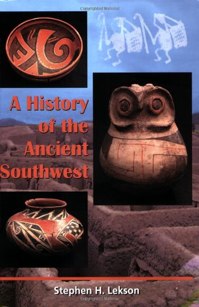Regional Systems
by Stephen H. Lekson
I’m delighting in Stephen Lekson’s A History of the Ancient Southwest. Lekson is the great prose stylist of history today, and one of the most capable writers of footnotes of all time.
One dispute that has rent Southwestern archaeology for generations has been what ancient peoples knew about things hundreds or thousands of miles away. The most distant Chaco outliers are 450km from the center; could that really be a regional system? From Chaco to Paquime is about 700 km; from Mimbres, Paquime was about 450km. From Chaco to Cahokia was something like 1800 km; could there even have been rumors? But Lekson takes as his premise that everyone knew everything; ancient people were smart, they got around, and they were curious about the next valley and the evening news.
Incidentally, the distance from the pyramids to Jerusalem or Jericho is about 450km – the radius of the Chaco horizon. And we’re reasonably confident that, a long time ago, some Egyptian workers underwent an ideological change and went out for a long walk. It took a generation to get where they were going. Not everyone went, and not all the people who would make up their new kingdom traveled along; the travelers were elites. The migrants are not immediately obvious in the archaeological record; there are Canaanite towns with pigs and other towns without. Not the same, of course; those guys had (a few) wheels, and knew about domesticated cattle, and they had writing. But Lekson has a point: distance can be managed.
